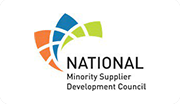Nearly two trillion dollars are laundered globally every year through human trafficking, drug smuggling, terrorism,and other organized crimes. The US alone loses nearly 500 billion dollars of taxes annually through money laundering.
To gear up for the mounting risks of money laundering, all companies are beginning to enforce a well-coordinated AML audit program. This program is designed to comply with the regulations of the Bank Secrecy Act [1] and the Financial Industry Regulatory Authority [2] , which ensure that appropriate procedures and internal controls are in place to account for changes in regulations and business [3]. AML audits, the front runners of anti-money laundering programs, are audits that independent third parties or specialized AML compliance officers perform, to assess if the company’s AML program is competent.
What Constitutes an Effective AML Program
The key to achieving a successful AML program is to follow a systematic and diligent procedure that revolves around the following pillars of compliance:
1. Appointing an AML compliance officer
A designated AML compliance officer, well-versed with the Bank Secrecy Act and responsible for the company’s AML program [4] , is the first step towards developing vigilance against money laundering. The duties of the AML compliance officer range from monitoring the company’s compliance with AML obligations to overseeing employees’ training and communication. He/she will also ensure the proper maintenance of all AML records and prompt filing of Suspicious Activity Reports with the Financial Crimes Enforcement Network (FinCEN) [5].
2. Designing internal policies, procedures, and controls
Companies must design policies that prohibit and control money laundering in all its duplicitious forms. The policies will arrest activities that facilitate money laundering, or funding of terrorist or criminal activities. These AML policies, procedures, and controls must comply with the rules and regulations of the Bank Secrecy Act as well as the Financial Industry Regulatory Authority.
3. Educating and training employees
In collaboration with the AML compliance officer, companies should develop and conduct regular employee training programs. The training will help identify red flags and signs of money laundering besides providing solutions and subsequent steps upon identification of risks.
The training can be done in-person or through digital lectures, and the company should maintain proper records of subject matter and the trained personnel. The number of times these training sessions occur depends on the size of the company, its customer base, and resources. It is advised to conduct the session at least once annually. Such training is crucial to any company, as internal audit departments often ascribe many AML issues to insufficient knowledge and/or expertise.
An independent AML Testing Training and Experience Framework is important to maintain a consistent approach for periodically assessing AML independent testing needs. This framework helps to optimize the training and to examine opportunities for development. Some of the major components of the framework include the training plan, independent testing resource plan, training assessment, and tracking and reporting.
a. AML Training Plans
There are different professional service firms which provide bespoke training,in a quick and affordable fashion. While many financial institutions rely on this option, some companies consider the existing firm-wide or department-wide compliance and AML assets for training purposes. This outhouse solution, however,often proves to be expensive and time-consuming.
b. Independent Testing Resource Plan
The company’s auditor should undergo Audit Training before commencing the audit, so he/she can apply up-to-date methods in the audits that follow. An independent testing resource plan will give the auditor a teaser of what’s to follow, by relating various AML systems of internal control.
c.Training Needs Assessment
A Training Needs Assessment will help the company understand if its employees or auditors require any particular kind of training. Such a continuous assessment will help the company identify the most pressing training needs and focus on bringing into practice high-priority solutions.
d.Tracking and Reporting
It is difficult to demonstrate that the company has indeed conducted AML training. It is important that the training sessions are held routinely, without cancellations or absences. In case of missed or improperly held training sessions, regulators can easily question the company’s commitment to this activity. They might even ask for the submission of the AML Training Record. Therefore, it is imperative to maintain proper training records and documents supporting the sessions.
4. Testing the AML program
Either the AML compliance officer or other external, qualified personnel can test the company’s AML compliance program to ascertain its adequacy. The company can sanction the testing annually, and increase the frequency if circumstances require it. The testing should include the following steps:
- Evaluating the procedures of the company for reporting and record keeping as per the Bank Secrecy Act.
- Evaluating thecompany’s transactions especially in high-risk areas.
- Evaluating responsive actions that the company has taken against identified deficiencies.
5. Instituting a Customer Identification Program
The company should follow reasonable procedures to verify the identity of customers who open new accounts. The Customer Identification Program of the company should be a part of its AML compliance program and should always be in writing. The AML programs of the clearing firm and introducing firm should have risk-based policies, procedures,and controls for monitoring and alleviating the money laundering risks that fully disclosed clearing arrangements pose and for reporting suspicious activity.
6. Administrating a Standard Testing Program
The company must carry out an annual review for updates in its inventory and develop a consistent Standard Testing Program accordingly. This Program should demonstrate flexibility towards all lines of business. The company should report the AML issues the Program identifies in a timely fashion to the senior management or to the Committee of Audit.
Conclusion
Money laundering has proven to be a monumental issue pervading all industries around the globe. Companies have concluded that they need to systemize sturdier AML programs as part of their compliance frameworks. The AML program described in this white paper, although not exhaustive, can help companies ensure that their organization is emancipated from money laundering crimes. Regulators need to focus more on appointing competent and knowledgeable AML compliance officers and audit staff, conducting proper training and testing, and organizing regular audits. Since targeted laws and statutes,designed to control money laundering, are making headway through the legal system, organizations remain optimistic about battling this crime and hope that it will soon be a yesteryear problem.
LegalEase Solutions (LE) has been providing legal support services to attorneys, law firms, and corporate counsel globally for 14 years. By working with the world’s leading companies and a range of challenging transactional, litigation, and legal intelligence projects, we have developed time-tested processes and industry know-how. If you need support with a project, please feel free to reach out to us at contact@legaleasesolutions.com. Our team of expert attorneys is happy to help.
Reference
[1]Bank Secrecy Act, 1970 – Bank Secrecy Act is a legislation passed by the United States Congress in 1970 to collaborate the financial institutions in the United States with the government in cases of suspected Money Laundering and fraud.
[2]FINRA is an independent, non-governmental regulator for all securities firms doing business with the public in U.S.
[3]31 CFR 1023.210 – Code of Federal Regulations is the codification of permanent and general rules which are published in the Federal Register by Federal Government agencies.







